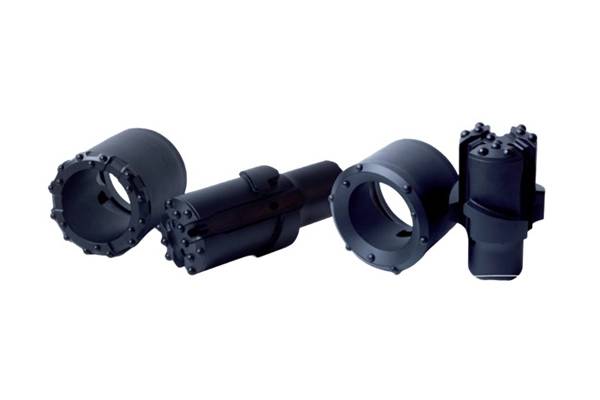Casing advancement systems play a crucial role in ensuring the safety and efficiency of ground drilling operations, particularly in the oil and gas industry. These systems involve the controlled movement of casing strings into the borehole, providing structural support and preventing borehole collapse. This article will delve into the intricacies of casing advancement systems, their applications, and the challenges they address.
Understanding Casing Advancement
Casing advancement refers to the process of gradually lowering casing strings into the borehole as drilling progresses. The casing serves as a protective barrier, preventing fluid loss, stabilizing the borehole, and isolating different geological formations.
Types of Casing Advancement Systems
Several types of casing advancement systems are employed in ground drilling operations:
Mechanical Casing Drivers
These systems utilize mechanical force to drive the casing into the borehole. They can be further classified into:
Hydraulic Casing Drivers
These drivers use hydraulic pressure to force the casing into the borehole. They are often used in shallow drilling applications where the borehole diameter is relatively small.
Impact Casing Drivers
Impact casing drivers use a hammer or other mechanical means to strike the casing, driving it into the borehole. They are well-suited for driving casing in hard rock formations.
Rotary Casing Drivers
Rotary casing drivers use a rotating drill string to advance the casing. They are suitable for both shallow and deep drilling operations.
Casing Running Tools (CRTs)
CRTs are specialized tools designed to facilitate the efficient and controlled running of casing strings into the borehole. They often incorporate hydraulic or mechanical mechanisms to assist in the advancement process. These mechanisms can include:
Hydraulic Jacks
Hydraulic jacks can be used to exert controlled pressure on the casing, allowing for precise advancement.
Mechanical Clamps
Mechanical clamps can be used to grip the casing and prevent it from rotating or slipping during advancement.
Lubrication Systems
CRTs may incorporate lubrication systems to reduce friction between the casing and the borehole wall, facilitating smoother advancement.
Challenges in Casing Advancement
Casing advancement can be a complex and challenging process, particularly in demanding geological conditions and deep drilling environments. Several factors can contribute to difficulties during casing advancement:
Borehole Instability
Soft or unstable formations can make it difficult to maintain borehole integrity, leading to potential casing collapse or stuck pipe incidents. The presence of faults, fractures, or other geological features can also increase the risk of borehole instability.
Stick-Slip
Stick-slip motion occurs when the casing experiences alternating periods of sticking to the borehole wall and sudden slippage. This can cause excessive friction, vibrations, and potential damage to the casing or drilling equipment.
Bending and Buckling
The casing can bend or buckle if it is not properly supported or if it is subjected to excessive loads. This can lead to reduced clearance between the casing and the borehole wall, increasing the risk of differential sticking or other complications.
Differential Sticking
Differential sticking occurs when the casing becomes stuck due to variations in friction between the casing and the borehole wall. This can be caused by differences in rock formations, fluid properties, or the presence of cuttings or debris.
In addition to these challenges, casing advancement can also be affected by factors such as:
Wellbore geometry
The shape and orientation of the borehole can influence the ease of casing advancement. For example, deviated or horizontal wells may present unique challenges compared to vertical wells.
Drilling fluid properties
The properties of the drilling fluid can affect the friction between the casing and the borehole wall, as well as the stability of the borehole.
Casing design
The design of the casing, including its weight, diameter, and material, can impact its behavior during advancement.
Overcoming these challenges requires careful planning, advanced equipment, and experienced personnel. Effective casing advancement strategies may involve using specialized drilling fluids, employing advanced casing running tools, and implementing real-time monitoring systems.
The Role of Technology in Casing Advancement
Advancements in technology have significantly improved the efficiency and reliability of casing advancement systems. Some notable developments include:
Real-time Monitoring
Advanced sensors and monitoring systems can provide real-time data on casing position, forces, and borehole conditions, enabling operators to make informed decisions and address potential issues promptly.
Intelligent Casing Running Tools
CRTs equipped with intelligent features, such as automated control and fault detection, can optimize the casing advancement process and minimize downtime.
Advanced Drilling Fluids
Specialized drilling fluids can help reduce friction between the casing and the borehole wall, facilitating smoother advancement.
Case Study: The Importance of Casing Advancement in Deepwater Drilling
Deepwater drilling presents unique challenges due to the extreme pressures and temperatures encountered at great depths. Casing advancement systems are essential for ensuring the safety and efficiency of deepwater operations. For example, in the Gulf of Mexico, advanced casing running tools and specialized drilling fluids are used to overcome the challenges of deepwater drilling and prevent wellbore collapse.
Conclusion
Casing advancement systems are indispensable in ground drilling operations, providing critical support and protection for the borehole. By understanding the different types of casing advancement systems, the challenges they address, and the role of technology in improving their performance, operators can enhance the efficiency and safety of their drilling activities.

